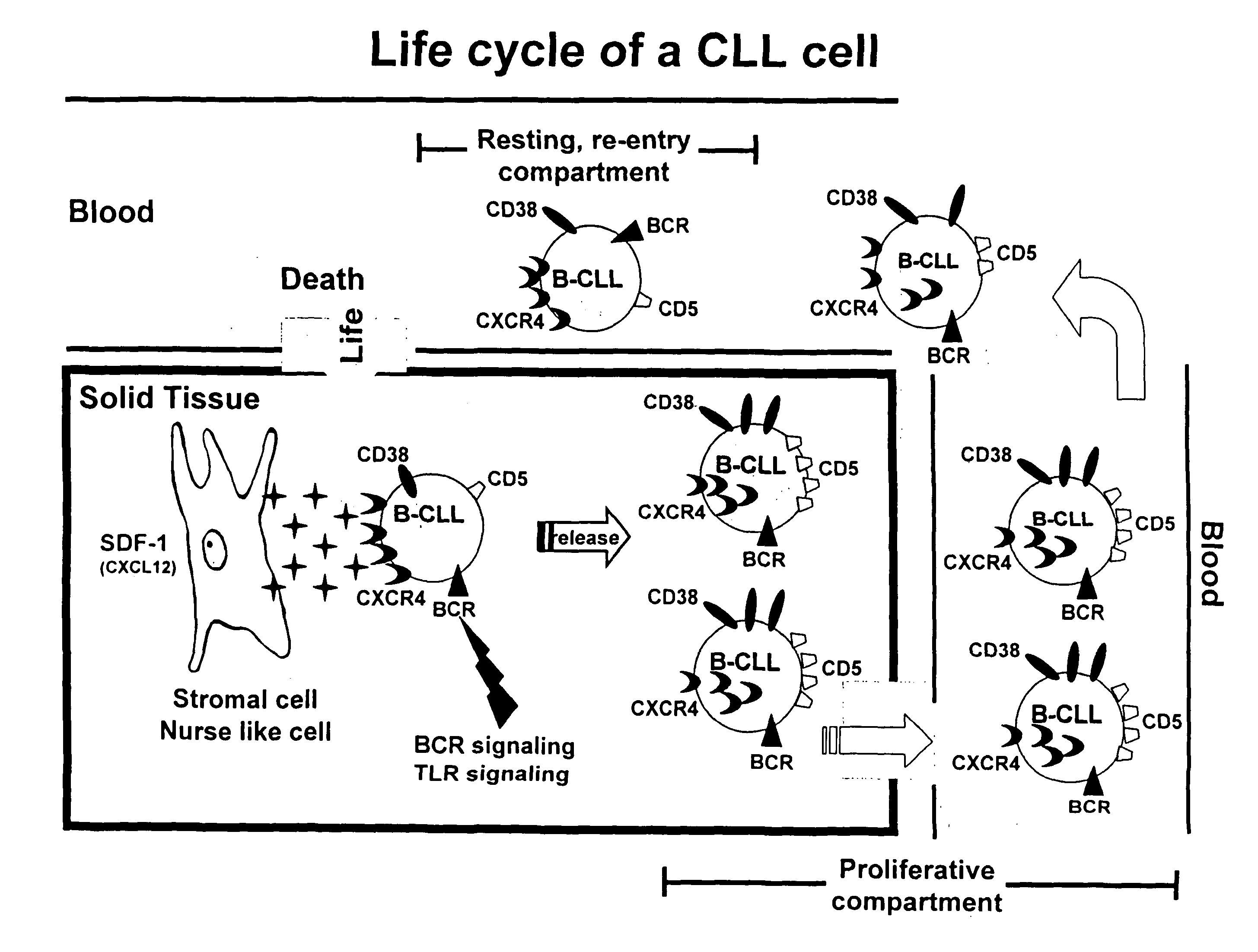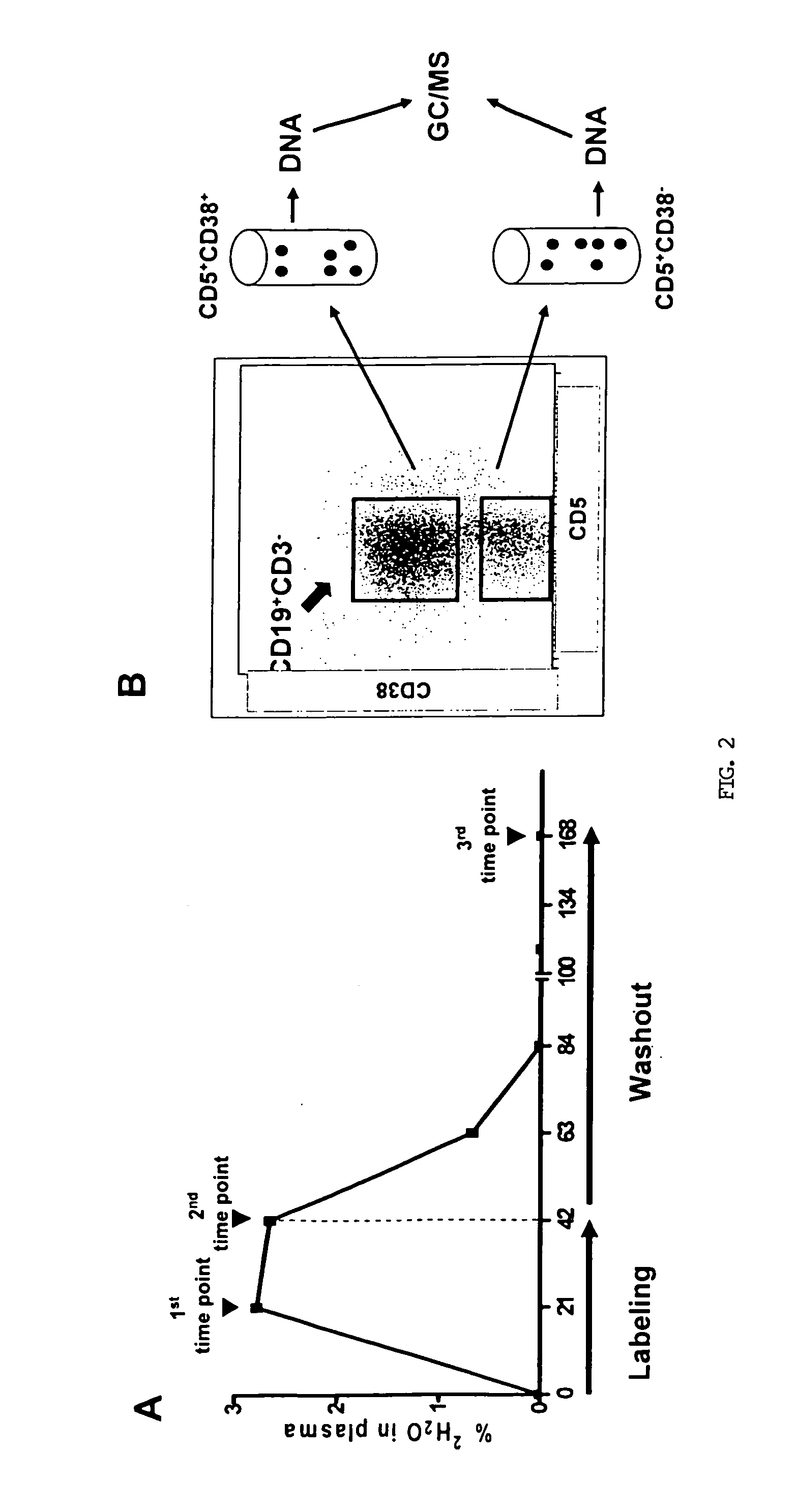Method for treating chronic lymphocytic leukemia
- Summary
- Abstract
- Description
- Claims
- Application Information
AI Technical Summary
Benefits of technology
Problems solved by technology
Method used
Image
Examples
example 1
[0064]B-cell chronic lymphocytic leukemia (CLL) is a relatively common and incurable adult disease of unknown etiology. The tumor mass is an expansion of a CD5+ B lymphocyte clone whose members share the same B-cell receptor (BCR) antigen-binding domains. The vast majority of circulating CLL cells is non-proliferating lymphocytes (1, 23, 23).
[0065]Nevertheless, a small proliferative compartment does exist (12, 41) and lymph nodes and bone marrow contain aggregates of activated, dividing cells (called “proliferation centers” or “pseudofollicles”) that apparently represent the preferred site of relapse (24). In addition, accessory signals delivered by bystander cells in the microenvironment of solid tissues are essential for neoplastic cell survival and expansion (25), suggesting that clonal accumulation requires survival signals that rescue leukemic cells from death. Therefore, CLL, like other leukemias and lymphomas, exhibits a dynamic interaction between birth and death of cells (1...
example 2
[0082]During the disease course of CLL, ongoing genetic changes are evident within the leukemic clone, and such changes are associated with disease progression. Activation-induced cytidine deaminase (AID), an enzyme required for immunoglobulin class switching and somatic hypermutation in B cells, is a candidate enzyme for causing such changes.
[0083]Depending upon the detection method peripheral blood CLL cells express mRNA for AID in between 40% to 100% of patients but at very low levels within a very minor population of cells (˜0.01-1.0%). Because of the presence of AID in such a small number of cells, we hypothesized that those cells are contained within the recently divided subset (“proliferative compartment”). FIG. 17A demonstrates, in a representative patient sample, that mRNA is limited to this subset (here defined as CD23+++CD11a+CXCR−; FIG. 17B).
[0084]Dividing cells in CLL are principally found within bone marrow and secondary lymphoid tissue. Based on the above data, these ...
PUM
| Property | Measurement | Unit |
|---|---|---|
| Fraction | aaaaa | aaaaa |
| Fraction | aaaaa | aaaaa |
| Fraction | aaaaa | aaaaa |
Abstract
Description
Claims
Application Information
 Login to View More
Login to View More - R&D
- Intellectual Property
- Life Sciences
- Materials
- Tech Scout
- Unparalleled Data Quality
- Higher Quality Content
- 60% Fewer Hallucinations
Browse by: Latest US Patents, China's latest patents, Technical Efficacy Thesaurus, Application Domain, Technology Topic, Popular Technical Reports.
© 2025 PatSnap. All rights reserved.Legal|Privacy policy|Modern Slavery Act Transparency Statement|Sitemap|About US| Contact US: help@patsnap.com



